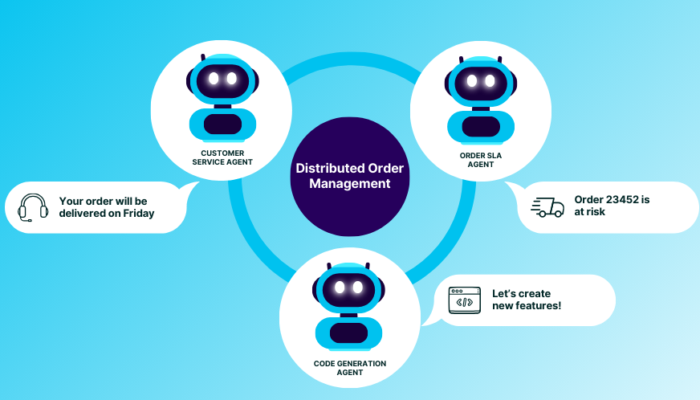Consumers are frustrated. While digital commerce has made shopping more convenient, the cracks are starting to show. As digital demand has increased, the number of out of stocks has soared. But sometimes they’re hidden…. and that’s even worse for the customer experience. Why?
1. Overselling
Think about it from your customer’s perspective. They come to your online store, maybe due to an ad on social, maybe search, or maybe they were just browsing. Whatever the reason, they have a goal. They want to buy. They land on your product page, check out the meticulously crafted copy and images. And it says you’re in stock. They’re sold! So they place that order. But then… a few hours later… they get that dreaded email:
“We’re sorry, that item is no longer in stock. Your order has been canceled.”
WTF? Their frustration soars. And they think to themselves “How do you not know what you have in stock?”
But as we in the business are fully aware, accurate inventory can be really hard. So some retailers take a different approach.
2. Underselling
They set their safety stock higher. Which might be great for preventing canceled orders. But it leads to another problem. Underselling, i.e., more out of stocks. And if you’re underselling you’re leaving money on the table. How does that work?
Let’s look at a simple example (these numbers could look very different for different verticals or categories). Say you set your safety stock at 10 units across all SKUs for online orders, and 5 units for all SKUs at all locations for store pickup orders. Why? Because it’s simple. No one has to think too hard about it. And you know that across any SKU that should give you enough of a buffer that you don’t oversell. But there is a problem with that approach. Not all SKUs are created equal.
Think SKU velocity. The fact is, some items move faster than others. So if you set a single safety stock level across all products to ensure you never oversell, you’re effectively ‘hiding’ safe inventory at lower velocity SKUs from your customers. Which means, when you get down to say, 9 units of a low velocity SKU it will show as ‘out of stock’ online.
Meanwhile, if that SKU never sells more than 3 units between inventory updates, you’ve set it way too high. And, as a result, you’ll have more out of stocks and are probably missing out on sales. Not to mention disappointing customers who visit your online store only to find the item they want to purchase is out of stock. And this doesn’t just impact online sales.
3. Local store stock
In the 2022: Top Holiday Shopper Trends survey, globally, 68% of shoppers said they are likely to check online to see if an item is in stock before they visit your store. But both oversellers and undersellers have a problem here.
If you have a tendency to oversell, there’s a good chance the product will show as ‘in stock’ at the local store online, only for your customer to experience an empty shelf at the store. Super frustrating! Meanwhile, if your safety stock is set too high, the item will show as out of stock online – which means that customers won’t actually visit your store. So not only will you lose the sale of that item? But any impulse purchases they might have made while in your store. Now that’s expensive!
The solution
So how do you fix this problem? Let’s look at a three pronged approach:
Get Accurate Inventory
The first step is to get accurate inventory. Which is easier said than done. Inventory data can sit in lots of systems. And most companies tend to use their ERP as their inventory hub. There’s just one problem. An ERP was purpose built to be an accounting system – a financial system of record. Which means, by nature, it was designed to take a ‘slow and steady’ approach to data. The problem is, this is the opposite of digital commerce where speed and agility are key. Inventory extracts from ERPs tend to be big bulk batches of all records. This makes inventory updates slow and stale. What you really need is a system that lets you:
- Manage safety stock at the SKU-location level per digital channel
- Segment inventory so you can control what you sell in each channel, market or region
- Respond to thousands of ‘stock availability checks’ per second from all your digital channels, and
- Get control over your out of stocks.
That’s where a dedicated distributed order management system like Fluent Order Management comes into play. It was purpose built to broker inventory data between your back end systems and your digital channels, at scale, and in real-time. It also tracks your digital demand in detail so you can generate insights to improve your store fulfillment operations. Like what?
Factor digital demand into your replenishment strategy
When retailers first started to use stores to fulfill online orders, overall demand at any given store was low. This meant there was no real pressure to adjust store replenishment strategies. Your existing store stock could be used to cover the demand. But with the rise in ecommerce, and particularly Ship from Store, that has changed. The impact of digital demand on store inventory has grown, which means you need good data to drive your inventory planning decisions. Otherwise you’ll end up with out of stocks in stores and online. But there’s another factor to consider.
Replenish based on the source of demand
When you look at digital demand, it can be easy to fall into the trap of replenishing the stores that fulfilled the orders. But that’s not necessarily optimal. Why not? What if the only reason a store shipped an order was because they happened to be in stock, while a store that was closer to the customer was out of stock. If you restock the store that fulfilled an order, but the actual demand is coming from another location, you’ll end up increasing the average distance over which you ship orders. Which can not only drive up delivery costs, but also increases the carbon footprint of that order. So when you plan replenishment, make sure you factor in the source of demand.
For more information on how Fluent Order Management can help you get better inventory accuracy, more control over your out of stocks, and get the data you need to improve your store replenishment strategy, Request a Demo today.



